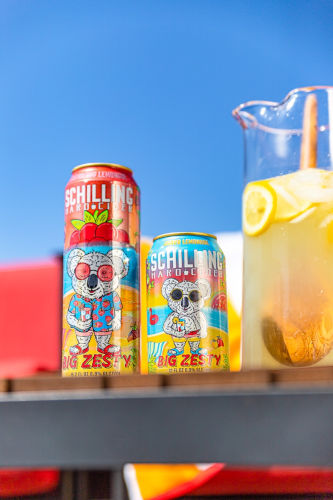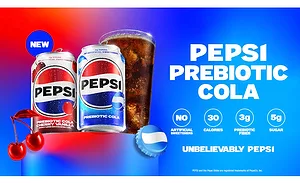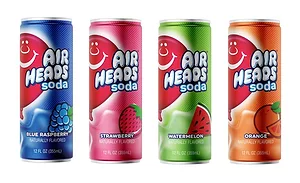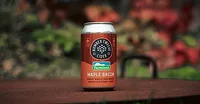Special Report
2024 Beer Report | Hard cider ready to make a comeback
March 7, 2024
Special Report
2024 Beer Report | Hard cider ready to make a comeback
March 7, 2024Image courtesy of Angry Orchard/The Boston Beer Co.
Author Anne Lamott is quoted for saying, “there is nothing as sweet as a comeback when you are down and out, about to lose, and out of time.” Although the hard cider category is not out of time, the segment is looking to make a comeback after another year of experiencing volume sales declines, but saw a slight uptick in dollar sales.
For the 52 weeks ending Jan. 28 in total U.S. multi-outlets, Chicago-based Circana data shows dollar sales for hard cider were $486 million, a 1.7% increase, while cases sales were down 2%. This is an improvement to last year when Beverage Industry’s 2023 Beer Report found hard cider dollar sales were down 3.4% and case sales were down 8.7% for the 52 weeks ending Jan. 1, 2023.
Although the hard cider segment has improved, experts note that there’s still some hurdles to overcome.
“Ciders face challenges in perception as a seasonal beverage with a limited and very sweet flavor profile,” say Ryan Toenies, client insights consultant for Circana; and Cara Piotrowski, client insights consultant for Circana.
But the two note that the segment’s variety allows it to overcome this limitation.
“Offering variety in sweetness, flavor combinations, and ABV levels helps to overcome some of these challenges and introduce cider to new audiences,” they say.
Toenies and Piotrowski anticipate that hard cider will see more of these approaches with new innovations.
“[Hard cider will] continue to see innovation in ABV levels, fermentation, sweet versus dry and lightness; and flavor combinations with tropical fruits, honey and berries,” they say.
Looking for a reprint of this article?
From high-res PDFs to custom plaques, order your copy today!

Chicago-based NielsenIQ experts Jon Berg, vice president of BevAl Thought Leadership; and Kaleigh Theriault, director of BevAl Thought Leadership, also note the impact that flavor innovations is having on the segment.
“Flavor is quite prevalent in this segment, while consumers are also looking for natural ingredients and processes in many cases,” they explain.
Berg and Theriault add that future flavor creations will exhibit “elements around sweetness, acidity, tannins, spice and degree of fruit flavor.”
2 Towns Ciderhouse explored spice and fruit this past summer with the limited release of Piña Fuego. A chipotle pineapple cider with an 8% ABV, Piña Fuego is crafted with fresh-pressed Northwest apples, smoked chipotle peppers and sweet, ripe pineapple, achieving a tropical and smoky taste, the company said.
Angry Orchard, a subsidiary of The Boston Beer Co., Boston, also is exploring the higher ABV niche when it released this winter Crisp Imperial. Featuring an 8% ABV, Crisp Imperial features a bold flavor with a level of sweetness, the company says. Available nationwide in six-packs, Crisp Imperial is a permanent, year-round addition to the Angry Orchard portfolio.
Schilling Cider, however, took a more traditional flavor approach last summer with its release of Big Zesty Raspberry Lemonade. At 6.9% ABV, Big Zesty Raspberry Lemonade is a tangy, juicy, ripe-raspberry twist on the beloved summer beverage, the company says.
The release of higher ABV and flavorful creations also seem to be helping hard cider stage its comeback.
“Imperial Ciders have seen tremendous growth in value (plus 71.8%) and volume (plus 80.2%), led by Schilling and Angry Orchard,” Circana’s Toenies and Piotrowski say. “Dry ciders are also growing (plus 25.4% in volume).”
NielsenIQ’s Berg and Theriault, meanwhile, tout the close proximity of hard to other ready-to-drink alcohol products as helping the segment to be competitive in the year to come.
“There has been some opportunity in this category with RTDs in general having solid growth,” they explain. “Cider is effectively an RTD as well so it has a solid adjacency and potential upside.”
However, not all analysts are convinced that this is a benefit for hard cider. Brian Sudano, CEO and president of S&D Insights LLC, Norwalk, CT, notes that flavored malt beverages (FMB) size and activity in the flavored alcohol space hampers hard cider’s ability to appeal to more consumers.
“Hard cider has never been mainstream in the U.S. and plays more in the flavored space with FMBs,” he says. “The amount of innovation in FMBs and consumer’s overall lack of knowledge and interest in hard cider provides headwinds for the category in the short term.”
Top Hard Ciders
Source: Circana, Chicago. Total U.S. multi-outlets (grocery, drug, mass merchandisers, convenience, military commissaries, and select club and dollar retail chains) for the 52 weeks ending Jan. 28, 2024.
Sudano also points to the distribution hurdles facing hard cider when compared with FMBs. “The interaction with FMBs and RTDs, which have much more innovation and access to retail channels are one headwind,” he says. “Also, the size and scale of traditional beer drowns out any noise that exists around cider.”
NielsenIQ’s Berg and Theriault also note the impact that competition for shelf space has had on hard ciders.
“Getting distribution and shelf space has been important,” they say. “These products also have a shelf life that needs to be monitored and maintained.”
With hard cider manufacturers developing higher ABV and innovative flavors, securing the shelf space will be crucial for the beer segment to enjoy the sweetness of a comeback.









